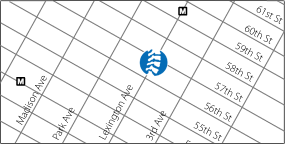Keeping Your Back On Track, Part 1
 Dr. Marc A. Bochner on
Dr. Marc A. Bochner on  Tuesday, August 22, 2006 at 09:37AM
Tuesday, August 22, 2006 at 09:37AM Lower back pain can be very difficult to live with, let alone run with. You have probably heard the bad news before: 80 percent of adults will have at least one episode of acute lower back pain. Lower back pain is the most common complaint to doctors next to the common cold. Although not contagious like a cold, dysfunction and pain in the lower back is so prevalent because of a combination of anatomical and lifestyle factors. Anatomically, the upright position of normal posture places the forces of gravity vertically through the spine. The back, especially the lower portion, must be able to handle motion yet remain stable against the forces of supporting the rest of the body above it. Thus a strong, flexible and well-aligned spine is desired, yet many people, due to poor lifestyle habits, have weak core muscles, stiff spinal joints and poor posture. This poorly conditioned state of our backs is often no match for both the repetitive stresses of daily modern life, such as sitting in a car or at a computer for long hours, and the repetitive stresses of endurance sports such as marathon running. Acute or chronic back pain is often the result.
Alright, enough of the bad news about the challenges we face when it comes to the back. What can be done about it? Education, prevention, and proper and early treatment are the keys to a healthy spine. First, here is a quick review of normal spinal anatomy and how the spine should function.
The spine is made up of 24 movable vertebrae, with 7 in the neck (cervical), 12 in the upper and middle back (thoracic), and 5 in the lower back (lumbar). Nerve roots exit left and right at each level. Additionally, the sacrum and coccyx form the base of the spine. The hip bones articulate with the sacrum, forming the sacroiliac joint, which is often a problem area in runners. Intervertebral discs, which are made up of a semi-liquid center surrounded by a tougher, fibrous layering of cartilage (think of a jelly donut) are placed between each vertebrae to cushion and guide spinal motion. Ligaments run up and down the spine, front and back, and add further stability. Finally, three layers of muscles attach from the the sacrum up to the neck and allow us to bend in all directions and also, provide for a strong “core” from which to move off of. The abdominals, olbliques and latissimus dorsi also provide this core strength, and strong and flexible hamstring, calf and hip and shoulder girdle muscles allow us to move without strain on the back.
Now, what causes all of these muscles and joints to stop working together as they were designed to and leads to the pain? As in most health problems, a combination of structural, chemical and emotional stressors eventually overwhelms the body and leads to tissue breakdown. Repetitive physical stressors and such as prolonged sitting or bending wrong strain and tighten spinal joints, decrease circulation, raise the pressure on our intervertebral discs, and tighten key muscles. Chemically, a diet deficient in “anti--inflammatory” foods such as unrefined oils (fish/olive), fruits and vegetables makes tissues more acidic and painful. Emotions such as anxiety, fear, and depression can further restrict blood flow and tighten muscles, lowering their tolerance for the physical stressors. Thus, a cycle of minor joint strain and muscle tightening, pain, emotional disturbance, and further physical damage occurs. Healthy muscle tissue becomes replaced by fibrotic scar tissue, which is less elastic and weaker. In the general population, when the above lifestyle factors are not being addressed, acute injury or chronic pain often is the result. Unfortunately, in either case often the process is developing for a while before the symptoms start, and pain may be the first sign that something is not working right. Running, although it counteracts some of these modern stressors and strengthens the body, still can lead to or be affected by back pain.
Strategies for the prevention and proper and early treatment of lower back pain in runners are discussed in part 2 of this article.


